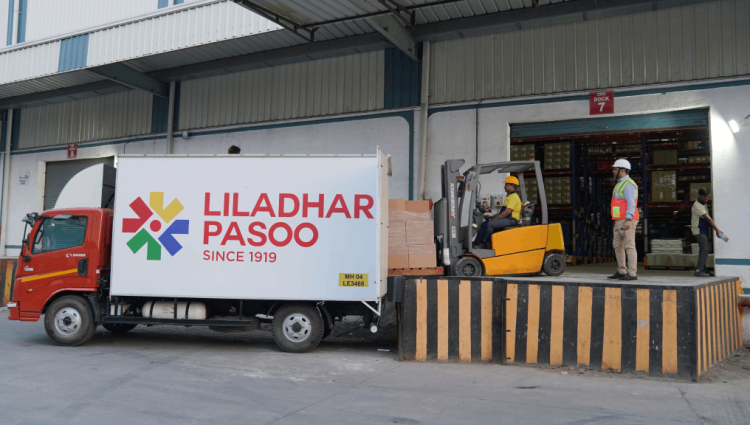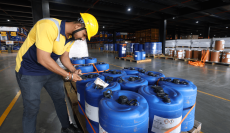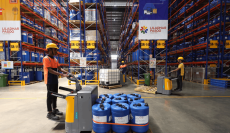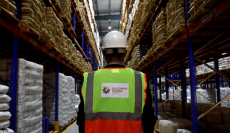Logistics plays a crucial role in supply chain management, ensuring goods and services move efficiently from suppliers to consumers. Two essential components of this process are inbound logistics and outbound logistics. Understanding the differences between these two logistics strategies is key to optimizing overall business operations and maximizing profitability. This article explores the key distinctions, strategic importance, integration of inbound and outbound logistics, and how businesses can leverage them to improve their supply chain.
What is Inbound Logistics?
Inbound logistics refers to the process of sourcing, acquiring, and managing the movement of raw materials, parts, and goods from suppliers to warehouses, factories, or production units. This encompasses various activities like procurement, transportation, and storage. The efficiency of the inbound logistics process directly impacts production timelines, inventory costs, and the overall quality of products.
The goal of inbound logistics is to ensure that necessary resources are available for manufacturing or resale at the right time, in the right quantity, and at the lowest cost possible. Components like supplier relationships, transportation management, and warehousing services all play a vital role in this stage of the supply chain. A smooth inbound logistics process ensures that the company’s operations can proceed without disruption, avoiding delays in production or stock shortages.
What is Outbound Logistics?
On the other hand, outbound logistics focuses on delivering the finished product from the company to the final consumer. This includes transportation services like shipping, delivery, and distribution, as well as managing order fulfillment and customer service processes. This may involve distributing goods to retailers, wholesalers, or directly to customers, depending on the business model. Outbound logistics processes include packaging, warehousing, distribution, and the transportation of goods to the market.
The success of outbound logistics relies heavily on the company’s ability to manage demand, plan delivery schedules, and optimize routes for speed and cost-effectiveness. Since this stage of the supply chain directly impacts customer satisfaction, maintaining an efficient outbound logistics system is essential for meeting customer expectations and upholding a company’s reputation.
Key Differences Between Inbound and Outbound Logistics
While inbound and outbound logistics both aim to streamline the flow of goods, their functions and focus areas differ significantly:
- 1. Direction of Flow: Inbound logistics deals with the movement of materials and supplies into the company, while outbound logistics is concerned with the distribution of finished products to customers.
- 2. Supplier vs. Customer Focus: The primary focus of inbound logistics is on supplier management—ensuring the timely receipt of raw materials and resources. In contrast, outbound logistics focuses on meeting customer demands by delivering finished products on time.
- 3. Inventory Management: Inbound logistics often involves managing raw materials and components, requiring companies to optimize their inventory systems to prevent shortages or overstock. Conversely, outbound logistics is centered around finished goods, ensuring they reach customers promptly and in optimal condition.
- 4. Storage and Warehousing: While both processes involve warehousing, inbound logistics emphasizes the efficient storage of raw materials, whereas outbound logistics focuses on preparing products for dispatch and distribution.
- 5. Cost Drivers: The costs associated with inbound logistics are mainly linked to procurement, shipping raw materials, and warehousing services. For outbound logistics, transportation and delivery costs, as well as packaging and customer service, are more significant.
- 6. Time Sensitivity: Inbound logistics is more about aligning raw material deliveries with production schedules, while outbound logistics deals with timely deliveries to customers, making it more time-sensitive in terms of customer expectations.
Strategic Importance of Inbound and Outbound Logistics
The strategic importance of both inbound and outbound logistics cannot be overstated, as they are key to a business’s supply chain efficiency, cost management, and customer satisfaction. Optimizing both processes provides several advantages:
- 1. Cost Reduction: By optimizing the inbound logistic process, businesses can reduce procurement and storage costs. Efficient supplier management and transportation scheduling lead to significant savings. Similarly, optimizing outbound logistics can cut costs related to transportation and distribution, ultimately improving the bottom line.
- 2. Improved Customer Satisfaction: A streamlined outbound logistics system ensures that products reach customers on time and in good condition. The reliability of delivery services is a key factor in enhancing customer satisfaction and brand loyalty.
- 3. Inventory Control: Effective management of both inbound and outbound logistics can lead to better inventory control. By coordinating deliveries with production schedules and demand forecasts, businesses can minimize excess inventory while ensuring they have sufficient stock to meet customer needs.
- 4. Enhanced Supply Chain Visibility: Integrating inbound and outbound logistics into a unified system gives businesses real-time visibility into the movement of goods. This can lead to faster decision-making, improved risk management, and the ability to respond to market changes more quickly.
- 5. Green Logistics: Today, companies are placing greater emphasis on sustainability, and logistics is no exception. Both inbound and outbound logistics processes can be optimized to reduce carbon footprints through the use of eco-friendly packaging, fuel-efficient vehicles, and optimized delivery routes, contributing to green logistics initiatives.
- 6. Competitive Advantage: Efficient logistics solutions allow businesses to respond more swiftly to market demands, gain a competitive edge, and scale their operations effectively. Those that can deliver faster and at lower costs are positioned to outperform competitors.
The Role of Technology in Inbound and Outbound Logistics
The integration of technology into logistics processes is reshaping the landscape of both inbound and outbound logistics. Modern software solutions, like transportation management systems (TMS) and warehouse management systems (WMS), enable real-time tracking of shipments, automate processes, and provide valuable data for forecasting and planning.
For inbound logistics, technology allows for better communication with suppliers, automated reordering systems, and real-time inventory monitoring, enhancing the inbound logistic process. For outbound logistics, tech solutions help optimize delivery routes, reduce transportation costs, and ensure timely deliveries. Businesses are also leveraging data analytics to identify bottlenecks and improve overall efficiency.
The Future of Inbound and Outbound Logistics
As supply chains become more complex and customer expectations continue to rise, the future of logistics will likely see greater reliance on automation, AI-driven decision-making, and sustainability. Integrating inbound and outbound logistics into a cohesive, technology-enabled strategy will be crucial for companies looking to stay ahead of the curve. By prioritizing flexibility, visibility, and sustainability, businesses can enhance both their operational efficiency and customer satisfaction.
How LP Logiscience Can Help
At LP Logiscience, we specialize in providing end-to-end logistics solutions that streamline your supply chain, whether it’s inbound logistics or outbound logistics. Our expertise ensures that your inbound and outbound logistics processes are optimized for cost-efficiency and speed, while our focus on green logistics and cutting-edge technology gives you a competitive edge in the marketplace. Let us help you manage your logistics more effectively, improving your bottom line and delivering results.
FAQ
1. What is the difference between inbound logistics and outbound logistics?
Inbound logistics focuses on the process of receiving and handling raw materials, supplies, and goods from suppliers to a business. Outbound logistics, on the other hand, deals with the distribution of finished products from the business to customers or retailers. Both inbound logistics and outbound logistics are essential for keeping the supply chain running smoothly.
2. Why are inbound logistics and outbound logistics important for a business?
Inbound logistics ensures that raw materials and supplies are available for production, while outbound logistics helps deliver finished products to customers. By managing both processes effectively, businesses can reduce costs, improve efficiency, and keep customers satisfied.
3. How can inbound logistics and outbound logistics be optimized?
You can optimize inbound logistics and outbound logistics by using technology like warehouse management systems, improving supplier communication, and streamlining transportation routes. This helps in reducing delays, minimizing costs, and boosting overall productivity.
4. What role do warehousing and transportation play in inbound logistics and outbound logistics?
Warehousing stores the raw materials for inbound logistics and finished products for outbound logistics, ensuring they are ready when needed. Transportation is key in both processes, moving goods from suppliers to the business (inbound) and from the business to customers (outbound).
5. Can inbound logistics and outbound logistics impact customer satisfaction?
Absolutely! Efficient inbound logistics ensures that production is never delayed due to a lack of materials, while streamlined outbound logistics ensures products reach customers on time. Together, these processes contribute to better service and happier customers.






